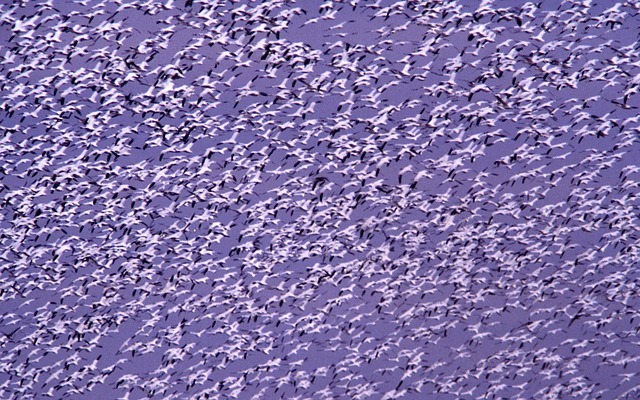Feb 21, 2017
CONSERVATION SNOW GOOSE HUNTS
We set out into the Arkansas night. Rain pattered the windshield as we sipped coffee and quietly rehashed past, somewhat less memorable, snow goose hunts - the mornings we rose at 3 a.m. to set out a couple thousands white rags in the freezing cold, picking them up after the hunt with numb hands. Today would be different. We’d be setting out a light spread of snow goose decoys that we banked would work just as well.
We’ve worn ourselves out toting so many decoys day after day, weekend after weekend. With time, the mud seems to get a little deeper, a little more slippery and sloppy. We needed a change in the gear we used. That’s why we created the Snow Goose Combo Pack.
In the spring, snow geese are northbound, heading up from the Gulf Coast and Central America toward their breeding grounds in the Arctic Tundra. Even though they can fly hundreds of miles at a time, snow geese still get tired and need to replenish their energy stores. That’s what makes Arkansas, Missouri, the Dakotas and other states in the Mississippi Flyway such popular spots for conservation hunts.
Often times, these large flocks of hungry geese can decimate a farmer’s winter wheat field in a matter of days. To hunt snows, you’ll need to know where they’re feeding. This means also knowing where they’re roosting. Successful hunters allocate several hours to scouting, mostly from the truck looking for feathered cyclones and fields of white.

We’d done our homework and knew the flocks we’d been watching the past two days would come back to feed in the same field. At the tractor shed we changed into our white jump suits and loaded all of our gear - four shotguns and blind bags, two Snow Goose Combo Packs - into one extended cab Polaris Ranger. The minimalist approach; it was perfect.
The first big flight hovered over our small spread right at shooting time. Half of the flock didn’t even check up when they saw the decoys. A third of those never made it out of shotgun range. Wave after wave of snow geese continued to drift over our decoys until we’d made quite a pile. It was one of the best waterfowl hunts we’d ever been a part of. When the morning turned to noon, we collected our decoys and geese, loaded up the Ranger, and were back at the tractor shed in no more than 30 minutes. The rain had turned to sleet as a winter storm made its way down from the Midwest.
Talking later about our minimalist approach and the times we’d spent too many hours setting out large spreads, we speculated that snow geese may be spooked by the unnatural movements of rags. Of those pairs of eyes looking down on you, many are upwards of 20 years old and have experienced the hunter’s foolery for quite a few seasons. No matter what you’re hunting, added realism in the decoy can make all the difference.
NOTE: Snow goose seasons vary in every state. Licenses are free and you can shoot an extended-magazine or unplugged shotgun. If you’re in need of a guide service, there are a wide range of accommodations online.
The Snow Goose Combo Pack includes three 3D, three side-view and six top-view decoys. These decoys are so realistic and so light it felt like we were hunting turkeys what with the lack of excess weight we carried into the field. And it was perfect.
